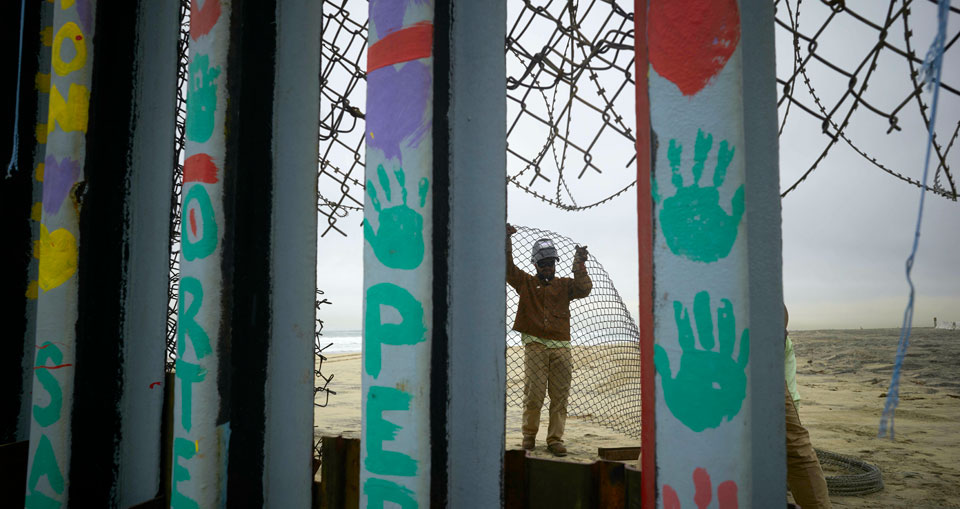
Months after President Trump declared a national crisis and shut down the government for 35 days, the Pentagon approved $1 billion from a military personnel account to build a 57-mile fence on the southern U.S. border. The 18-foot-high construction project will be erected within the Yuma and El Paso Sectors. Despite objections from lawmakers, Trump was able to bypass Congress and redirect the money, breaking the customary legislative procedure on Capitol Hill.
Congress was made aware of the executive order late Monday. In a last-ditch effort, the House of Representatives failed to override President Trump’s veto on a congressional resolution blocking his emergency declaration. The Democratic-controlled House came up short of the necessary votes, with fourteen House Republicans supporting the measure, but not enough to reach the two-thirds majority needed.
Following the vote, House Speaker Nancy Pelosi and Rep. Joaquin Castro, a Texas Democrat who authored the resolution, expressed concern over Trump’s disregard of congressional procedures. “The President’s lawless emergency declaration clearly violates the Congress’s exclusive power of the purse,” they said in a joint statement released to the public. “Congress will work through the appropriations and defense authorization processes to terminate this dangerous action and restore our constitutional system of balance of powers.”
Families around the country, meanwhile, continue to be affected by Trump’s anti-immigrant practices. Cecilia Garcia, a family reunification specialist, is one of many people who advocate for legislative policies that aid immigrant communities on a state-level. Garcia’s story was covered by People’s World in 2017 during the “Day Without An Immigrant” protest in Chicago. The mother of five has been fighting to reunite her family for seven years, ever since her undocumented husband was deported over a minor traffic stop violation.
The decision to allocate funds to the Department of Homeland Security and Customs and Border Protection is largely being viewed as a political distraction. “It’s a show for racist Americans,” says Garcia, “It is Trump’s way of saying I don’t care about the Senate, I’m building a damn wall.” The 57-mile fence will only cover a fraction of the 1,933 mile border, an excessive cost for an unnecessary and incomplete project.
Trump’s 2016 presidential campaign was largely centered around his promise to “build a wall” and tackle the issue of undocumented immigration. At one point during the campaign, he claimed that Mexico would be paying for the wall. After many failed attempts to negotiate with Congress over the funding of the wall, however, Trump has now resorted to utilizing his executive powers.
Despite the ongoing obstacles under the current administration, Garcia says that undocumented individuals, like her husband, are undeterred. Garcia reiterates the fact that a majority of the people trying to come in through the border are actually seeking legal asylum. “South Americans have been fleeing to the U.S. since the 2009 military coup in Honduras, under the Obama administration.”
Although tens of thousands have applied for asylum in the United States, the estimated number of undocumented immigrants living in the U.S. reached a 12-year low in 2016. The decade-long decline continues to steadily fall, a fact that makes the $1 billion border fence an even more absurd investment.
For the 2017 fiscal year, it was reported by the Department of Homeland Security that 701,900 immigrants overstayed their visas and remained in the U.S. past their expected departure date. This is more than double the number of undocumented immigrants that were apprehended at the border. This pattern has remained consistent for years.
It is not entirely clear whether Trump will be able to start construction of the fence just yet. He may have to wait for the resolution of a number of lawsuits filed by Democratic state attorneys general. In the meantime, the National Emergency Act allows for a resolution of disapproval to come up every six months, and Democrats say that they intend to bring it to another vote when the time arrives. This marks the first use of Trump’s veto power and will inevitably set a dangerous precedent for an escalation of the administration’s authoritarian tactics.
The Department of Defense is responsible for authorizing the transfer of funds under a federal law. According to a public statement released by the DOD, the money will be utilized to “construct roads and fences and to install lighting to block drug-smuggling corridors across international boundaries of the United States in support of counter-narcotic activities of Federal law enforcement agencies.”
Regardless of the fact that Congress is now hemmed in by the executive decision, Garcia says that walls have never stopped people from crossing the border before, and they won’t now. “People will climb anywhere, swim anywhere, go through tunnels for a better life—regardless of a wall.”











Comments